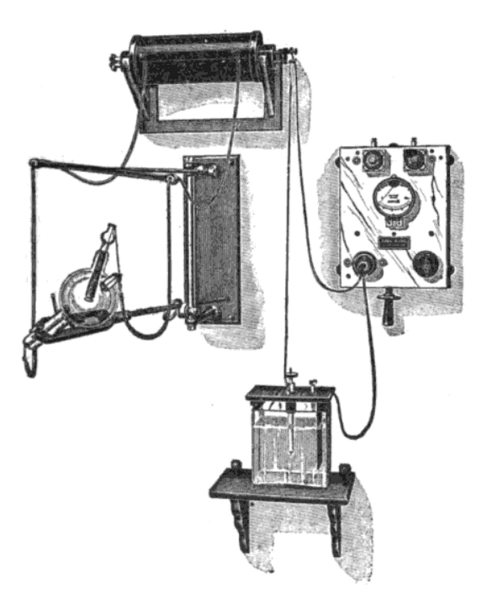Archivo: Crookes x-ray apparatus

Descripción: A medical Crookes x-ray machine, wall mounted, from around 1910. This used a first generation cold cathode x-ray tube (left) invented by William Crookes, mounted on an adjustable rack. The earliest type of x-ray tube, the Crookes tube did not have a heated filament to generate electrons like modern x-ray tubes, but instead generated them by ionization of residual gas in the tube by a high voltage. It radiates x-rays downward, through an aperture in the mounting plate. The high potential of 10 - 80 kV for the tube was generated by an induction coil (top). The primary current for the coil was provided by an adjustable power supply (right). In order to create the abrupt flux changes the coil needed to operate the primary current was repeatedly broken by an electrolytic (Wehnelt) interrupter (bottom) invented by Arthur Wehnelt in 1899. This device consisted of a fine short platinum needle anode and a lead plate cathode, immersed in a jar of dilute nitric or sulfuric acid. When the primary current passed through the device, hydrogen bubbles formed on the needle and interrupted the currenf flow randomly thousands of times per second. Each "break" in the current created a pulse of high voltage from the coil.
Título: Crookes x-ray apparatus
Créditos: Retrieved 11 November 2013 from Sinclair Tousey 1921 Medical Electricity, Röntgen Rays and Radium, 3rd Ed., W. B. Saunders Co., Philadelphia, p. 719, fig. 457 on Google Books
Autor(a): Sinclair Tousey
Términos de Uso: Dominio Público
Licencia: Dominio Público
¿Se exige la atribución?: No
Usos del archivo
La siguiente página enlaza a este archivo:

